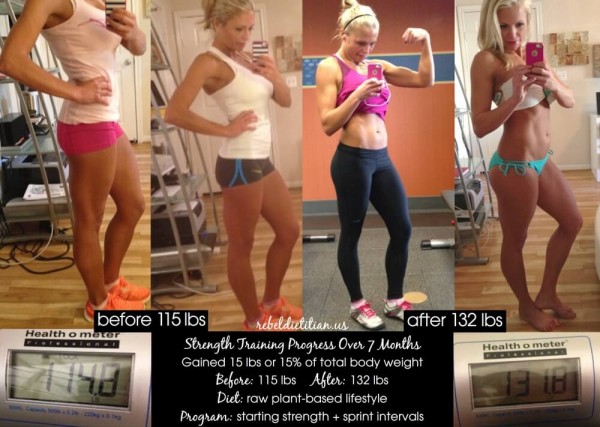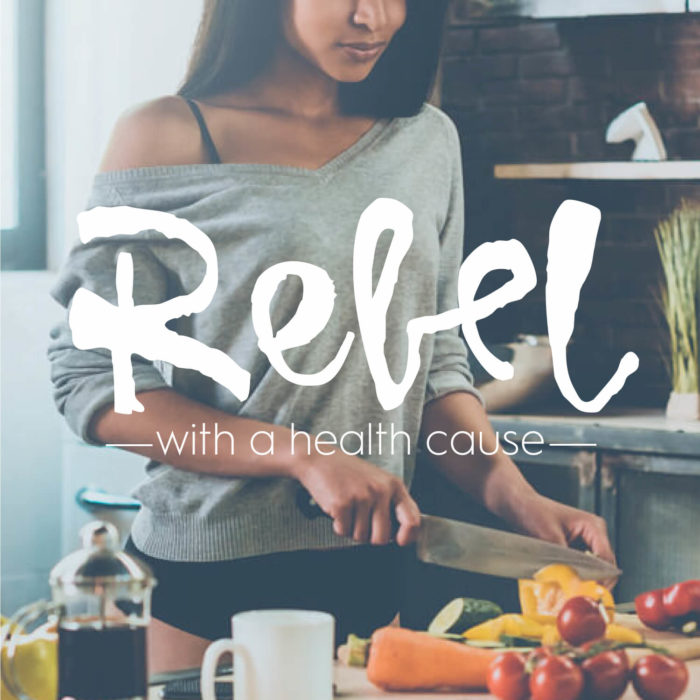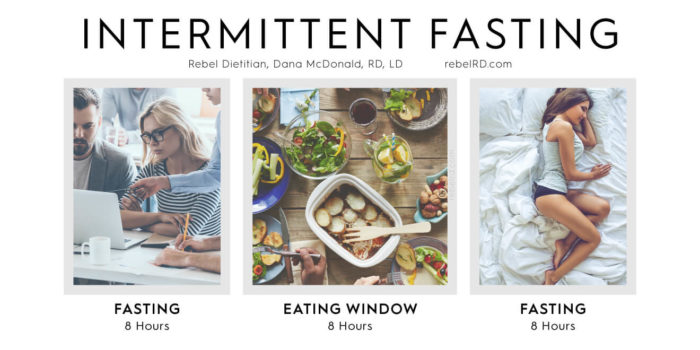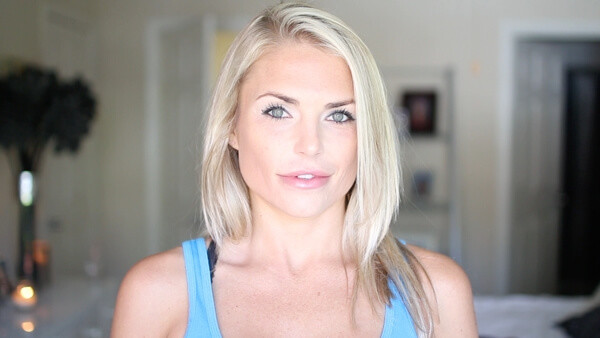First and foremost, I think it is important that people understand that I do not follow any diet regimens or align myself with any health movements or philosophies. My personal lifestyle approach emphasizes eating clean and green, or a mostly raw plant-based diet. My intake of raw to cooked food varies from day-to-day, but I aim to consume at least 60% raw plants. Naturally, I eat more cooked foods in the winter. You can view examples of my grub by visiting the page titled Rebel Grub.
Rebel Grub
In general, my daily energy intake is reflected by the following food groups:
- Fresh Fruits and Vegetables: 50-60%
- Nuts and Seeds: 0 – 20%
- Fresh Nut Butter: 0 – 10%
- Dried Fruit: 0 – 10%
- Cooked Vegetables: 0 – 20%
- Cooked Beans and Legumes: 0 – 20%
- Cooked Single Whole Grains: 0 – 20%
- Processed Foods and Beverages: 0 – 10%
Which processed foods do you eat?
While I don’t consume these foods every day, the processed foods and beverages I rock include sprouted whole grain bread, ready-to-drink flax milk (all store-bought dairy and non-dairy milk is ultra-processed), vegan whole grain cookies, vegan dark chocolate bars (at least 72% raw cacao), etc.
Do Not Rock List
The foods I typically avoid and/or limit include the following foods and beverages:
- Fast Food + Junk Food;
- Animal Products (i.e., no meat, fish, or dairy);
- Meat Substitutes (e.g., tofu);
- Processed Cereals + Grains (e.g., white bread or pasta);
- Canned Foods + Beverages;
- Protein Supplements (e.g., protein powder or RTD shakes);
- Artificial Sweeteners (e.g., Splenda, Agave, or “Stevia”);
- Ultra Processed Condiments (e.g., commercial salad dressings);
- Carbonated Beverages;
- Sugary Beverages or Juice; and
- Alcohol.
Intermittent Fasting (IF)
Another important component of my lifestyle is intermittent fasting (IF) or going without food for a defined period of time. Caloric restriction (or fasting) is an age old tradition and cited by researchers as a robust means of increasing health and longevity across the lifespan. One of the most durable theories to explain the benefits of fasting on aging is the free radical theory.
This theory postulates that food metabolism generates free radicals; which, ultimately damages vital body molecules (tissue, DNA, etc.). This damage accumulates with time until, like an old car, we fall apart. In support of this theory, one of the most important findings in free radical research has been that eating less frequently throughout the day increases the lifespan.
My Fasting Schedule
In general, I fast from the time I wake up (6:30 am) until 2 – 3 pm. I have never been one to eat a big breakfast – I don’t wake up hungry or starving like some individuals report. Perhaps because I eat later at night – I’m not sure, but when I do eat breakfast, it makes me very tired and decreases cognitive performance throughout the rest of the day.
Once I break my fast, I do not restrict my food intake throughout the remainder of the day. If I am hungry at 10 pm at night I eat. It is not uncommon for an intermittent faster to consume more calories than someone who is not an intermittent faster and still maintain or lose weight; which, seems to imply the metabolic benefits exist even in absence of calorie restriction. With this being said, please keep in mind that this is not medical advice. Nor is it the only way to achieve your health and fitness goals. I realize intermittent fasting is not for everyone – and that is perfectly OK.
To learn more about intermittent fasting, check out the page titled Intermittent Fasting.
Rock My Fitness Program
My training program consists of strength training, interval training (sprint intervals), and indoor soccer. The major barbell lifts I perform include the low bar back squat, deadlift, push press, and bench press. My strength training program varies, but in general, I train each lift twice per week.
- Warm-up
- Strength Training (5 x 5)
- Sprint Intervals
- Indoor Soccer
Programming
In general, most of the strength coaches I’ve worked with utilize either the 3 x 10 or 5 x 5 strength training methodology. After experimenting with both methods, I’ve developed a combination approach that includes higher repetitions to warm-up and lower repetitions (5 x 5) to train. Prior to strength training, I do some jogging and stretching.
- Monday, Wednesday, and Friday: Squat and Deadlift (5 x 5)
- Tuesday and Thursday: Bench Press and Press (5 x 5)
- Saturday: Bodyweight Exercises and Indoor Soccer
- Sunday: Rest
Bodyweight Exercises
The bodyweight exercises I utilize include walking lunges, push-ups, flat lying glute bridges, chair dips, box jumps, and flat lying leg raises. I don’t perform these exercises every time I train. They are there when I feel like I need greater variety, lack access to the gym, or simply want to challenge myself that day.
Interval Training
My favorite HIIT exercise is sprint intervals. I sprint 90 yards, walk 90 yards, and repeat. I do this for 20-30 minutes, 3 times per week. Last, but not least, I play a little bit of indoor soccer whenever possible. Growing up, I played soccer for one of the most competitive soccer clubs in the country, Challenge Soccer Club, and was ultimately awarded a full soccer scholarship to McNeese State University. Soccer is my happy place.
Rules Breed Rebels
Keep in mind, I am not someone who can adhere to strict rules, not even the ones I program for myself. Don’t get me wrong, I’m not trying to imply I slack off (or skip workouts). What I mean is, if I want to modify my programming just a bit for that day (e.g., add something in or take something out), I will. Considering I’m not training for a competitive event, I keep my personal programming fun and flexible.
Granted, I’m not suggesting this approach is best or that you need to implement a flexible program like my own – at all. I’m simply trying to explain the madness behind my training program. My point is, I’m not a fan of strict rules, in any area of my life. Nor can I do the same exact thing, day, after day, after day. How boring..
My Strength and Fitness Progress
Below is a poster I created to demonstrate my gains in strength and fitness. In summary, I gained 15 pounds (or 15 percent of my total body weight) in a 6 month period using the strength and fitness regimen I described above. Which, is a LOT by anyones standards. Gaining 15 percent of your total body weight without gaining a lot of adipose tissue (I actually lost fat tissue) is difficult for most guys.
And no, I did not use any protein supplements, ergogenic aids, or consume animal products (e.g., meat or dairy). I was vegan then like I’m vegan now (I’ve been vegan for 5+ years). You can view examples of my food via the page titled Rebel Grub.
Frequently Asked Questions
Where can I learn more about eating clean?
The page titled Eat Clean.
Do you eat meat?
No, I’m vegan, which means I do not eat, use, or wear animal products. With this being said, it is important to understand that my goal in providing nutrition education to the public is to improve public health; which, can easily be achieved by providing science-based nutrition and fitness education and inspiration.
My point is, I am not here to argue with those who believe minimally processed animal products that are raised by small, local farmers who utilize sustainable and humane agricultural practices may be healthful when consumed as part of a plant-based diet. My hope is that everyone will choose to eat clean and green with great respect for the environment and rights and welfare of others.
I eat meat. Can I still follow you?
Yes, of course. Most of my followers eat meat. My goal is to provide nutrition and fitness education based upon the scientific evidence; not convert my followers into vegans. That is a very personal decision and I do not push my beliefs or lifestyle on anyone. Not even on my dog.
Are vegetarian diets healthy?
Yes, according to the Academy of Nutrition and Dietetics, “appropriately planned vegetarian, including vegan, diets are healthful, nutritionally adequate and may provide health benefits for the prevention and treatment of certain diseases. These diets are appropriate for all stages of the life cycle, including pregnancy, lactation, infancy, childhood, adolescence, older adulthood and for athletes. Plant-based diets are more environmentally sustainable than diets rich in animal products because they use fewer natural resources and are associated with much less environmental damage. Vegetarians and vegans are at reduced risk of certain health conditions, including ischemic heart disease, type 2 diabetes, hypertension, certain types of cancer, and obesity. Low intake of saturated fat and high intakes of vegetables, fruits, whole grains, legumes, soy products, nuts, and seeds (all rich in fiber and phytochemicals) are characteristics of vegetarian and vegan diets that produce lower total and low-density lipoprotein cholesterol levels and better serum glucose control. These factors contribute to reduction of chronic disease. Vegans need reliable sources of vitamin B-12, such as fortified foods or supplements.”
What is a plant-based diet?
A plant-based diet (or lifestyle) means a diet dominant in plants. Plain and simple. A plant-based diet should not be confused with a vegetarian or vegan diet. Some plant-based diets include animal products.
Where do you get your protein?
Protein is found in all plants – even celery. You can learn more about protein requirements and view plant-based sources of protein by visiting the pages Protein 101 and Plant-Based Protein Charts, respectively.
What’s wrong with consuming too much animal protein?
Excess intake of meat, especially red meat and ultra processed meat, has been repeatedly associated with increased risk of several major chronic diseases including obesity, type 2 diabetes, heart disease, and cancer. I review this topic in greater detail via the page titled Protein 101.
What about protein powder?
Protein powder isn’t a whole food and you don’t need it. I do not use any protein supplements (e.g. protein powder, drinks, shakes, and/or bars) nor do I recommend them because we simply do not them.
Which cooked foods do you eat?
While I don’t consume these foods every day, I dig the following minimally processed cooked plant-based foods:
- Beans (e.g., black beans, peas, garbanzo, and non-GMO edamame);
- Whole Grains (e.g., steel cut oats, extra thick rolled oats, brown rice, and quinoa);
- Baked Tubers (e.g., potatoes and sweet potatoes);
- Fresh and Frozen Vegetables (not canned due to BPA content); and
Snack ideas?
Sure, see the page titled Healthy Snack Ideas.
What are your thoughts about juice fasts?
Prolonged juice fasts are not healthful and may even be harmful.
Which sweeteners are considered “natural?”
To learn more about natural and ultra-processed sweeteners, visit the page Sweeteners.
Is it okay to eat conventional produce?
Yes, I eat conventional produce when organic isn’t an option for whatever reason (e.g., cost and availability). Just be sure to rinse all of your produce well.
What are your thoughts about frozen vegetables?
Frozen vegetables are great and often just as nutrient-dense as fresh.
What about canned vegetables?
Canned foods and beverages are a major source of endocrine disrupting chemicals (e.g., mercury, aluminum, and bisphenol A (BPA)).
Where can I learn more about produce storage?
See the page titled Produce Storage and Handling.
What about dried fruit?
I love naturally dehydrated fruit; however, it’s important to choose products that are dried naturally (e.g., free of added sugar and oil).
Which vitamins and minerals should I take?
See the page titled Micronutrients.
Is your dog vegan? What does he eat?
No, my dog is not a vegan; however, I do not feed him dog food (any kind), red meat, fish or seafood products. The only animal product I feed him is certified humane organic chicken. I purchase a whole chicken to reduce food waste and feed him that with a combination of different raw and cooked plant-based foods. He is super healthy and happy (err.. spoiled rotten). I started him on real food because he wouldn’t eat after we rescued him. He was a real mess, but the short story is, we rescued him, he was scared and wouldn’t eat, so I switched him over to real food to help him regain his health and strength, and I never looked back. Real food is healthier for pets. Granted, I don’t feed him junk food. I feed him real, whole foods. Unfortunately, most of the dog food on the market – even vegan products – are ultra-processed and refined. Not to mention, full of ingredients derived from GMOs. My point is, I’m doing my best and I hope that makes sense. 🙂
Which blender do you use?
The blender I use is a Vitamix Pro Series 750.
Which under-sink water purification system do you use?
Which juicer do you use?
Which air filters do you use?
Videos
“Vegan Diets Suck” and “Fruit Has Too Much Sugar”
Rebel Lifestyle
Squat Form
The first video is a squat video I made in order improve my form (“form critique”). It was shot after I had returned from Mark Rippetoe’s Starting Strength seminar. The best way to improve your form is to create a video so that you can watch yourself and seek tips from experts. Unfortunately, squat selfies aren’t so easy and these videos are kinda hard to come by (at least for me). The day this video was shot I had already finished training (i.e., I had already completed 6 sets), but a friend walked in, so I asked him to shoot some footage for me.
**Turn down your volume because the music is a loud.
Rock My Fitness Program
Playing Soccer
Below is a video I made while I was playing soccer after I had finished training. I generally play soccer after I train because I love it. I played soccer in college on a full soccer scholarship, so soccer has always been a huge part of my life. Soccer = Happiness 🙂
Learn More
Rebel Grub
To view photos of my grub, check out the page titled Rebel Grub.
Meal Planning
To view meal planning information, head over to the page Meal Planning.
Shopping Lists
To view shopping lists, visit the page titled Shopping Lists.
Posters and Charts
To view my posters and charts, hit up the page titled Posters.
Social Media
Rebel Lifestyle
Except where otherwise noted, content on this site is licensed under a CC BY-NC-ND 4.0 license. This means you are free to use my work for personal use (e.g., save the file to your computer or share via social media) as long as you do not modify the image or use the image for commercial purposes ($).
 Rebel Dietitian Dana McDonald, RD
Rebel Dietitian Dana McDonald, RD 








